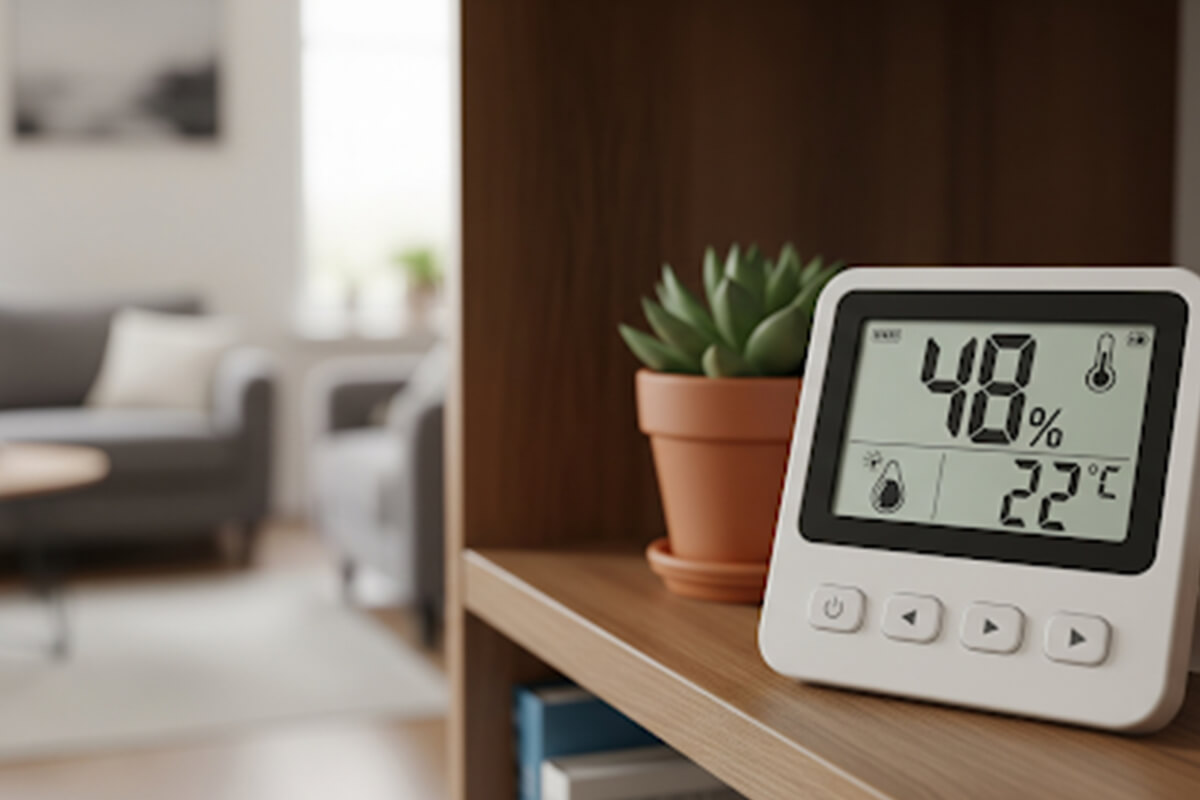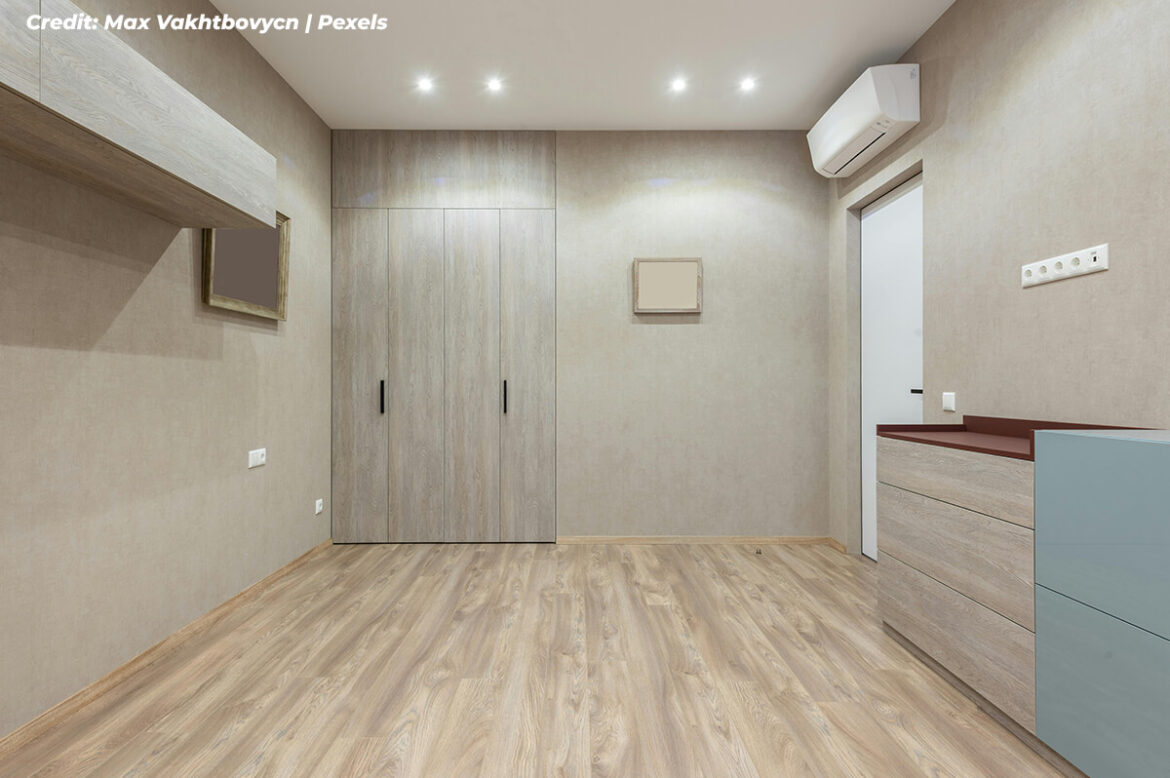You select your thermostat setting for your own comfort, but in doing so, you create a powerful, artificial indoor climate. This manufactured environment is often in direct conflict with the natural material under your feet – your wood flooring. In summer, your air conditioner wages war against humidity, while in winter, your furnace creates desert-like dryness.
Both of these actions, designed to make you comfortable, place immense stress on your hardwood, pulling and pushing at its fibres. Understanding and managing this year-round tug-of-war is the key to protecting your investment and ensuring your floor’s lasting beauty.
The Science of Stability: Understanding Your Wood Flooring’s Needs
To effectively manage your indoor climate, you must first appreciate the fundamental nature of your wood flooring. Wood is a hygroscopic material, meaning it naturally absorbs and releases moisture to stay in equilibrium with the air around it.
This characteristic is at the heart of the climate conundrum. When the air is humid, wood swells; when the air is dry, it shrinks. The goal for any homeowner is to keep the indoor environment within a stable range, preventing these extreme reactions.
The 35-55% Rule: Your Floor’s Comfort Zone
For most solid and engineered hardwood floors in Canada, the ideal relative humidity (RH) is the “Goldilocks Zone” of 35% to 55%. Straying outside this range for extended periods leads to predictable problems. Remember that consistency is crucial; small, daily fluctuations are normal, but prolonged periods outside the ideal range cause the most stress.
- High Humidity (above 55%): The wood fibres absorb excess moisture and expand. With nowhere to go, this pressure forces planks to press against each other, causing their edges to rise. This is known as “cupping.” In extreme cases, the floor can lift entirely off the subfloor, a condition called “buckling.”
- Low Humidity (below 35%): The wood releases its internal moisture into the dry air. As it shrinks, unattractive gaps can appear between the planks. If this drying happens too quickly or severely, the stress can even cause the wood to crack or split.
The Summer Challenge: Air Conditioning and High Humidity
During a humid Canadian summer, your air conditioner is your floor’s best friend and a potential adversary. The outdoor air is laden with moisture, encouraging your floors to swell. Running your AC is the primary way to combat this. As it cools the air, it effectively removes moisture, protecting your floors from cupping.
However, modern homes are often so well-sealed that a powerful air conditioner can become too effective. It can strip so much moisture from the air that it pushes the indoor RH below the optimal 35%, causing your wood floors to shrink even in the middle of July.
Balance is Important

The key is to find a balance. Using a digital hygrometer to monitor your home’s RH level is the single most important action you can take. Consider placing your hygrometer in a central location away from direct sunlight, drafts, or heat sources for the most accurate ambient reading.
This allows you to move from guessing to knowing. If you find your home is still too humid but the AC is making the air too cold, a dedicated dehumidifier is an excellent tool for targeted moisture removal without drastically lowering the temperature.
The Winter Battle: Central Heating and Extreme Dryness
While summer humidity poses a threat, the extreme dryness of a Canadian winter is often the more damaging force. When frigid winter air with very little moisture is brought into your home and heated by your furnace, its relative humidity plummets, often to desert-like levels of 15-20%.
This intensely dry air aggressively pulls moisture from everything in your home, including your hardwood floors. The wood is forced to release its moisture too rapidly, causing significant shrinkage. This is when you see noticeable gaps form between planks. In more severe cases, the stress of rapid drying can cause the wood’s surface to develop fine cracks or checks.
How to Combat Winter Dryness
Counteracting this extreme dryness is essential. The most effective solution is a whole-home humidifier integrated directly with your furnace, which automatically adds moisture to the heated air and distributes it evenly.
For smaller homes or apartments, high-quality portable humidifiers can also be effective at raising the humidity in key areas. Again, your hygrometer is your guide to ensuring you are maintaining that crucial 35-55% RH range throughout the heating season.
Material Selection and Long-Term Durability
Managing your home’s climate is one half of the equation; choosing materials designed to withstand these shifts is the other. Engineered hardwood, with its cross-laminated plywood core, is constructed for greater dimensional stability.
It is inherently less reactive to changes in humidity than solid hardwood, making it a highly practical choice for the dramatic climate swings experienced with wood flooring in Toronto and across the country.
An Investment in Longevity
This choice of a more stable product directly impacts the floor’s ability to last for generations. According to a study, an estimated service life of 44 years is obtained for indoor wood flooring systems, with protection type, wood type, and floor type significantly influencing their durability and sustainability (Silva et al., 2021).
Investing in a floor type better suited to your climate is a foundational step in achieving that longevity.
Invest in Stability, Enjoy a Lifetime of Beauty
The ultimate solution to the indoor climate conundrum is to choose a flooring system that is built to withstand the demands of a modern Canadian home. A floor’s ability to handle the cycle of summer air conditioning and winter heating is determined by its material composition, its protective finish, and the quality of its installation.
Rather than fighting a constant battle, you can begin with a foundation of stability. For expert guidance on selecting premium, stable, and beautiful hardwood flooring in Toronto that is perfectly suited for our four-season climate, connect with the specialists at Capital Hardwood Flooring at (416) 536-2200. A lifetime of beauty starts with choosing the right floor today.
